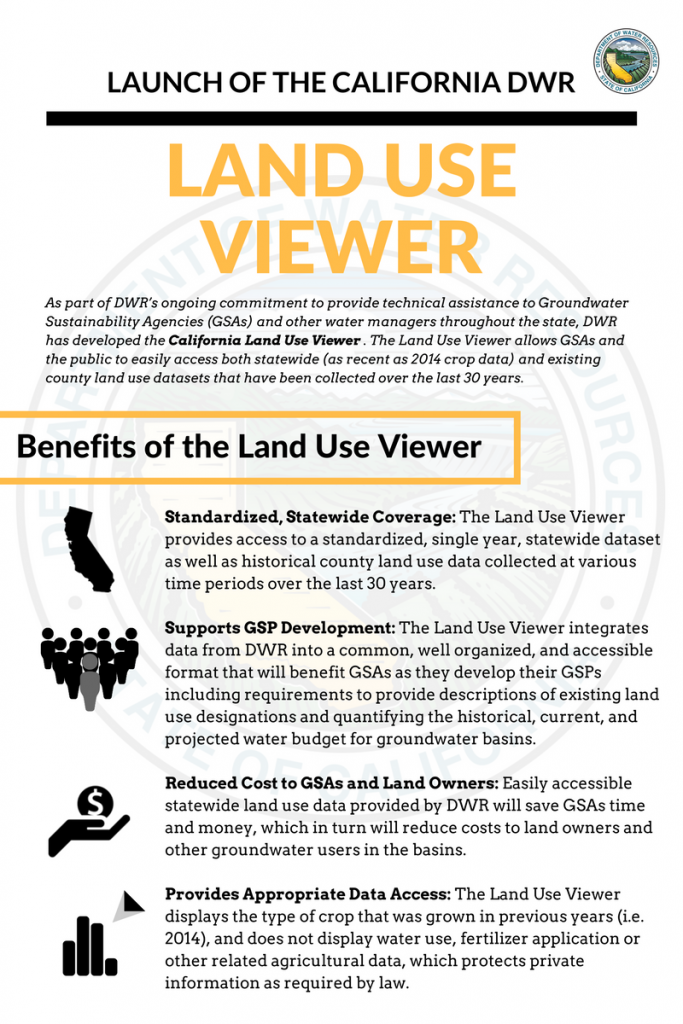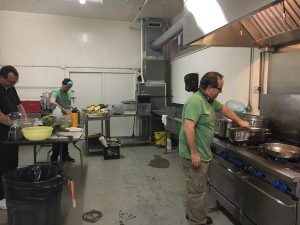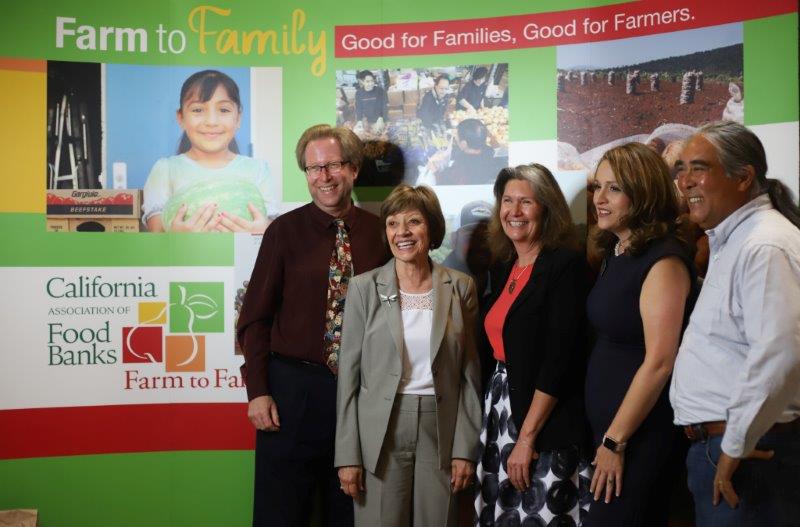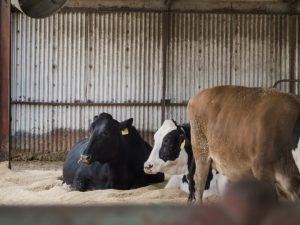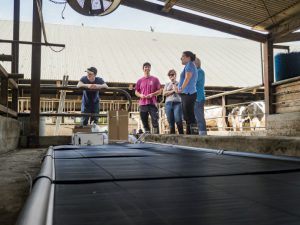SACRAMENTO — The California Department of Water Resources (DWR) has announced the public release of its new data visualization tool, the California Land Use Viewer. The tool allows Groundwater Sustainability Agencies (GSAs), growers and the public to easily access both statewide and existing county land use data sets collected over the last 30 years.
For California’s farmers and ranchers, the tool provides a clearer picture of California’s diverse agricultural tapestry. With over 400 commodities grown across the state, the viewer allows agricultural communities to see what is growing in their own backyards.
Growers might also use DWR’s land use viewer in tandem with University of California (UC) Davis’s Soil Agricultural Groundwater Banking Index, or SAGBI, SAGBI serves as a resource for growers to determine the suitability of groundwater recharge on agricultural land.
Already being implemented on several farms across the state, groundwater banking uses excess surface water to flood fields and replenish groundwater reserves. Researchers at UC Davis suggest this technique can restore Californian’s impacted aquifers without harming crops. Terra Nova Ranch in Fresno, CA, for example, has been actively working with state university and government partners to implement groundwater recharge. The operation estimates by using groundwater banking they can recharge up to 1,000 acre feet of floodwater per day.
Coupled with vital information provided by both DWR’s land use viewer and SAGBI, growers will be bettered positioned to see if they can adopt groundwater recharge practices on their own operations.
To learn more about the tool, please visit: http://water.ca.gov/groundwater/sgm/pdfs/SGMP_FS_LandUse.pdf.



